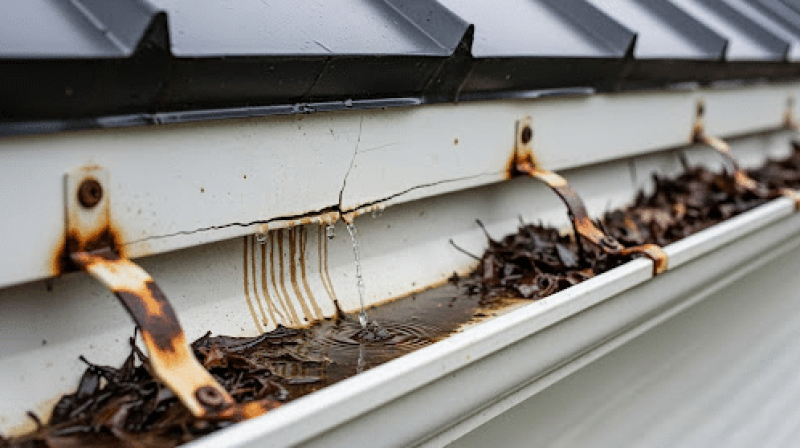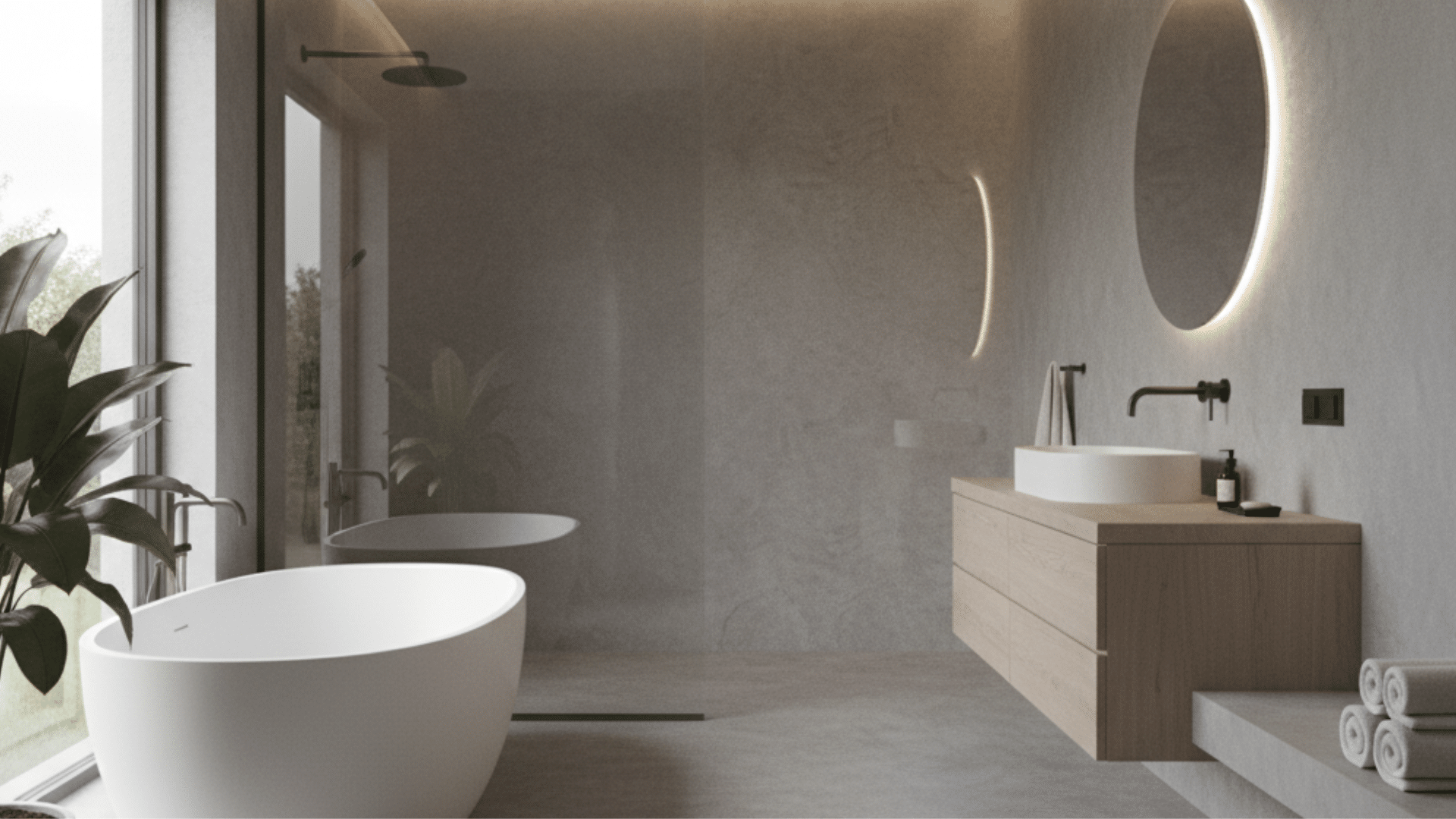Metal roofs are strong, stylish, and built to last but when it comes to gutters, things can get a little tricky. Many homeowners do not realize that metal roofs drain water much faster than traditional shingles, which can lead to issues that are often overlooked until they cause real damage.
From clogs and leaks to sagging or even gutters getting torn off after a heavy snowstorm, these problems can grow quickly if not handled in time.We will take a closer look at what causes trouble with metal roof drainage, why it happens, and more importantly what you can do to prevent it.
If you are already seeing signs of trouble or just planning ahead, this blog will help you deal with metal roof gutter problems and keep your roof, gutters, and home in great shape for years to come.
Do Metal Roofs Even Need Gutters?
At first glance, you might think a metal roof does not need gutters. After all, metal sheds water quickly and does not soak it up like shingles do. But the truth is, gutters still play an important role.
Without gutters, water running off your roof can splash down near your home’s foundation. Over time, this can lead to soil erosion, basement leaks, and damage to walls or landscaping.
In areas with heavy rain or snow, this runoff can even wear away walkways or driveways. Gutters help guide water safely away from your home.
So even if your metal roof handles water well, pairing it with a good gutter system is still a smart move to protect everything below it.
Common Gutter Problems with Metal Roofs
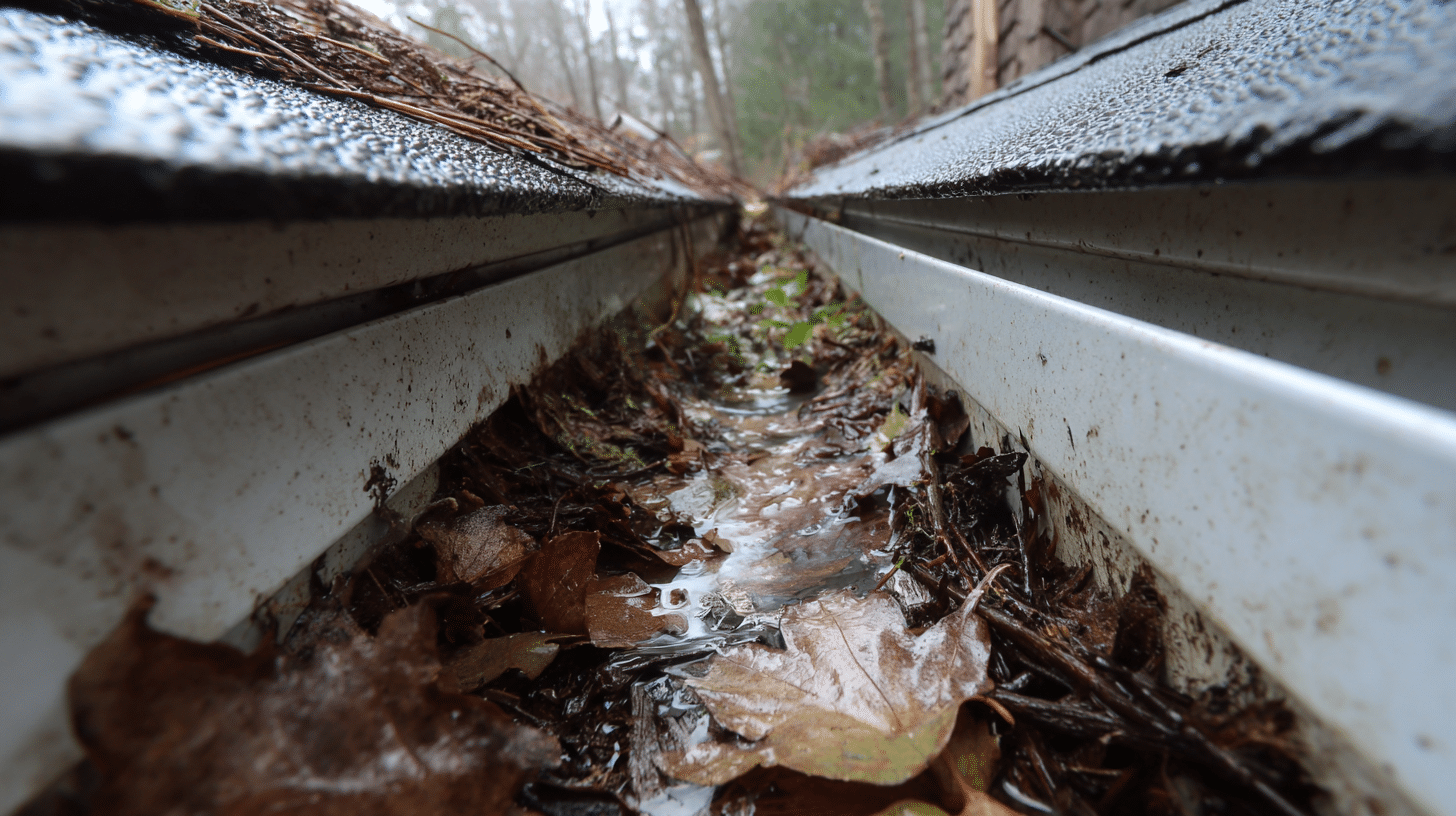
While metal roofs are great for lasting through tough weather, they can cause some problems for gutters if not installed or maintained the right way. Here are a few common issues homeowners face:
1. Clogged Gutters: Since metal roofs let water and debris slide off fast, leaves and twigs can quickly pile up in the gutters. This can cause water to spill over the sides and damage your siding or foundation.
2. Sagging or Loose Gutters: If gutters aren’t attached strongly or are spaced too far apart, the heavy water flow from a metal roof can cause them to sag or come loose. Over time, this can lead to complete gutter failure or pulling away from the house.
3. Leaks and Rust: Poor sealing or mixed metals can cause leaks or rust in your gutter system. Leaky gutters can stain walls and cause mold or mildew around your home.
4. Snow and Ice Damage: In cold areas, snow and ice can slide off metal roofs all at once. The sudden force can rip gutters off or bend them out of shape.
5. Expansion and Movement: Metal roofs expand and contract with heat and cold. This back-and-forth movement can loosen gutter screws or crack sealants over time.
By knowing these problems, you can catch them early and stop them from becoming bigger, more expensive issues.
Step-by-Step Guide for Cleaning Gutters
If your gutters are already causing problems or just haven’t been cleaned in a while, do not worry, cleaning them is easier than you might think. Here’s a step-by-step guide to help you get the job done right.
1. Gather Your Tools Safely
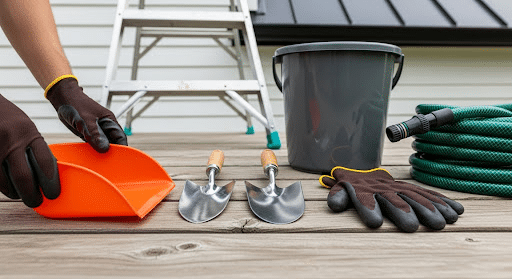
Before you start, make sure you have everything ready: work gloves, a small scoop or garden trowel, a bucket or bag, a sturdy ladder, and a garden hose.
Safety comes first, so place your ladder on even ground and have someone hold it if possible.
Wearing gloves will protect your hands from sharp debris, bugs, or rusted spots inside the gutter. Always be careful when working at heights.
2. Scoop Out Debris by Hand
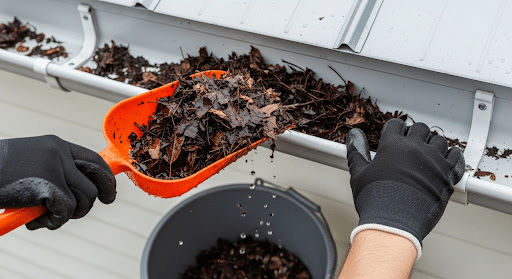
Begin by removing leaves, twigs, and other debris from the gutter. Use your hands or a scoop to loosen and lift the gunk out, placing it in a bucket or on a tarp below. Start at one end and work your way across.
This step helps prevent clogs, which can cause water to overflow and damage your roof, siding, or even your home’s foundation if left unchecked.
3. Flush Gutters and Downspouts
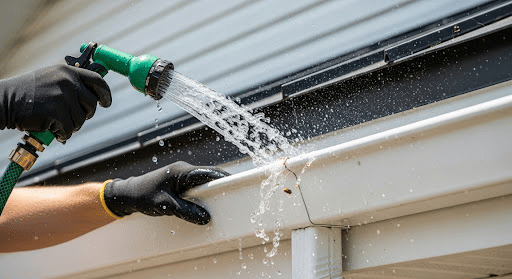
After clearing the larger debris, use a garden hose to flush water through the gutters. This helps wash out smaller dirt and shows if the water flows correctly.
Spray toward the downspouts, and check that water exits at the bottom without delay.
If it does not, you might have a clog. Try spraying water up through the bottom or use a plumbing snake to push the blockage out.
4. Inspect for Damage or Weak Spots

As you clean, keep an eye out for signs of wear and tear. Look for sagging spots, rust, cracks, loose screws, or places where water leaks.
These small problems can grow quickly if not fixed. Tighten loose fasteners, seal cracks with gutter sealant, or replace damaged sections.
Keeping your gutter system in good shape helps it work better with your metal roof and protects your home year-round.
5. Add Gutter Guards and Clean Twice a Year
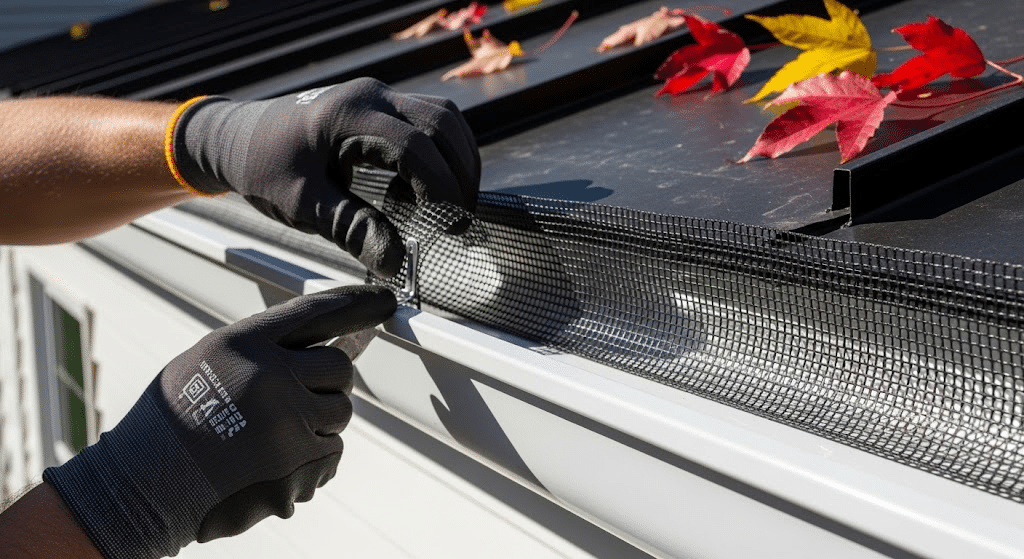
Regular maintenance is key. Clean your gutters at least twice a year, once in the spring and again in the fall. If trees surround your home, you may need to clean them more often.
Installing gutter guards can also help reduce how much debris gets inside, making future cleanups quicker and easier.
With consistent care, your gutters will stay clear and ready for whatever weather comes your way.
Cost Considerations & Lifespan of Different Gutters
Gutters come in all shapes, prices, and lifespans, so picking the right one really matters. Here is a quick look at what you can expect to spend and how long each option lasts:
| Gutter Material | Average Cost (per linear foot) | Lifespan (Years) | Notes |
|---|---|---|---|
| Aluminum | $5 – $9 | 20 – 30 | Rust-resistant and lightweight |
| Galvanized Steel | $6 – $10 | 15 – 20 | Strong but can rust over time |
| Copper | $15 – $30 | 50+ | Long-lasting and stylish, but pricey |
| Vinyl | $3 – $5 | 10 – 15 | Cheap, but not ideal for metal roofs |
Choosing the right material can save you money in the long run and reduce the need for repairs. Go with what suits your home, weather, and budget best!
Prevention Tips for Metal Roof Gutter Problems
To keep your metal roof gutters in great shape and avoid common problems, it is important to take a few simple steps regularly.
These easy prevention tips will help protect your gutters, save you time and money, and keep your home safe from water damage.
- Clean gutters twice a year or more if near many trees.
- Install gutter guards to prevent leaves, twigs, and debris, reducing cleaning.
- Use rust-resistant materials like aluminum or coated steel to prevent leaks and damage.
- Check fasteners and brackets often to make sure gutters stay tight and do not sag.
- Prune tree branches near your roof to stop leaves and sticks from falling into gutters.
- Ensure gutters have a slight slope for smooth water flow.
The Bottom Line
Metal roof gutter problems may start small, but they can turn into big and costly issues if not taken care of. Clogged gutters, leaks, rust, or gutters pulling away from your home can damage your roof, siding, and even the foundation.
The good news is that most of these problems are easy to prevent. Regular cleaning, using the right materials, and checking for early signs of trouble can go a long way.
If you’re already facing issues or just want to keep your home safe, paying attention to your gutters is a smart move. A well-maintained gutter system helps your metal roof work better and last longer.
Taking a little time now to fix or prevent problems can save you money, stress, and future headaches down the road.
Frequently Asked Questions (FAQs)
What is the Biggest Problem with Metal Roofs?
The biggest problem with metal roofs is often improper installation, leading to leaks and other issues. While metal roofs are durable and long-lasting, poor installation can negate these benefits.
How Far Should a Metal Roof Overhang Gutters?
For metal roofs, the overhang into the gutter should typically be 1 to 1.5 inches. This allows for proper water drainage into the gutter and prevents water from running behind the gutter or splashing over it.
What are the Disadvantages of Sheet Metal Gutters?
Gutter systems made of galvanized sheet metal require regular and constant maintenance, as well as painting. Scratches on the galvanized coating are visible, and there is a high probability of corrosion in places where the galvanized coating falls off or is chipped.


